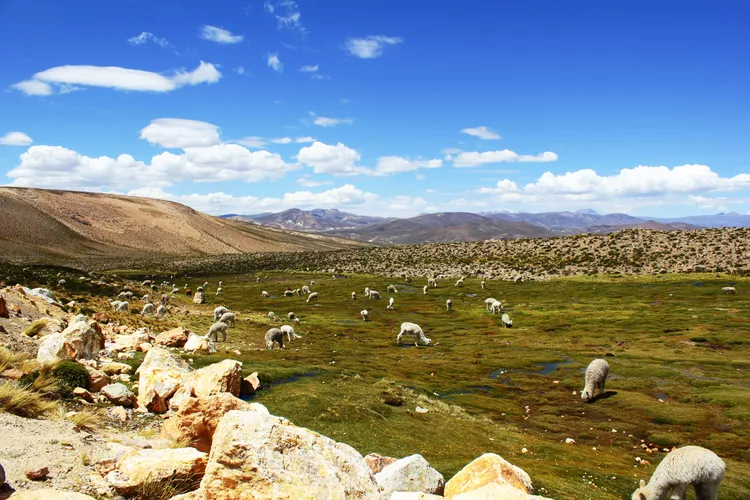1. Overview of the Gringo Trail
This article provides a detailed itinerary of the Gringo Trail in Peru, exploring major attractions, travel times, and must-see locations for an unforgettable journey.
2. Lima: Your Starting Point
3. Exploring Southern Peru
4. Highlights in Arequipa
5. Experiencing Lake Titicaca
There is a well-trodden tourist route in the southern half of Peru, commonly referred to as the Gringo Trail. This classic Peru itinerary encompasses many of the nation’s most famous attractions, including Machu Picchu, Lake Titicaca, and the Nazca Lines. With good connections by bus and plane, the route is flexible enough to accommodate schedules ranging from 10 days to a month or more.
Most travelers arrive in Lima, so we’ll take that as our starting point. You can easily join the Gringo Trail if you’re entering Peru overland from Bolivia or Chile.
The number of days spent in each location will depend on how much time you have and your personal preferences, so the days listed are a rough guide only.
Lima (1 to 4 days)
Many tourists arrive in the capital and leave just as quickly. If you only have 10 to 15 days in Peru, you’ll probably only need a day or two in Lima, perhaps more if you enjoy vibrant city life. Take a day to explore the historic center and indulge in excellent ceviche at a local cevicheria. There are numerous attractions and experiences in Lima, so consider extending your stay if you have the time.
Pisco and Paracas (0 to 2 days)
Heading south from Lima, you’ll journey through Pisco and Paracas. If your itinerary is tight, both cities could potentially be skipped. However, the Islas Ballestas National Reserve is a major appeal for nature enthusiasts, so plan to spend a day or two in this area if you wish to explore its natural wonders, including Humboldt penguins, Peruvian boobies, and pelicans.
:max_bytes(150000):strip_icc():format(webp)/jjj1of1-2WEB-f8ac1c752c444c87b53dcc5c7fe6b2e2.jpg)
Ica (0 to 2 days)
The next destination is the city of Ica, which you might skip if you want to prioritize other locations. Ica is known as a major producer of pisco, making it a great spot to sample this famous alcoholic beverage. While pisco and sandboarding might be an odd combination, the nearby village of Huacachina boasts Peru’s largest sand dunes, ideal for extreme sports enthusiasts.
Nazca (1 to 2 days)
Traveling further south leads you to Nazca, a city that might not captivate you at first glance. However, the Nazca Lines, located nearby, are a unique attraction that more than compensates for this. If you arrive early, consider taking a flight over the Nazca Lines and visit surrounding attractions before continuing to Arequipa.
Arequipa (2 to 4 days)
The enchanting colonial heart of Arequipa deserves at least a day or two of your time to explore. Make sure not to miss the extensive Santa Catalina Monastery. The city is also filled with excellent restaurants, lively bars, and dancing spots. If you are interested in trekking, Arequipa offers stunning landscapes, including access to Colca Canyon and the El Misti volcano.
:max_bytes(150000):strip_icc():format(webp)/902625_10151551833934819_1964947573_oWEB-e53122bfb8984f83a7e05d0cad65060a.jpg)
Puno and Lake Titicaca (2 to 5 days)
Lake Titicaca is a stunning destination, with the lakeside city of Puno serving as the primary hub for tourists. You can spend three to four days discovering the lake and its islands, including the Islas Flotantes and various archaeological sites. If your time is limited, it’s possible to explore the main attractions of Titicaca in just two full days. If your schedule allows, consider a visit to the Bolivian side of Lake Titicaca, particularly the Islas del Sol y de la Luna.
Cusco and Machu Picchu (2 to 5 days)
Cusco offers immense opportunities for exploration, easily keeping you engaged for a month if time permits. While Machu Picchu is the pinnacle of attractions, there are many other sites of equal interest throughout the region. Additionally, Cusco boasts a rich culinary scene, vibrant nightlife, and diverse cultural experiences. Even with only two or three days, you can fit a lot into your itinerary. For those interested in hiking, the classic Inca Trail requires a four-day commitment; however, if faced with limited time, a one-day tour to Machu Picchu may be a better option.
Adjusting the Classic Peru Route
Summing up the days spent on the aforementioned itinerary, you’ll find a range of eight to twenty-four days, not including travel time. This translates to roughly ten days for a shorter tour and around 28 days for a more comprehensive exploration of Peru. It’s wise to maintain one or two free days in your plan to accommodate unforeseen delays. If you find yourself with extra time at the end of your journey, consider venturing into the jungle or exploring the north coast of Peru.




